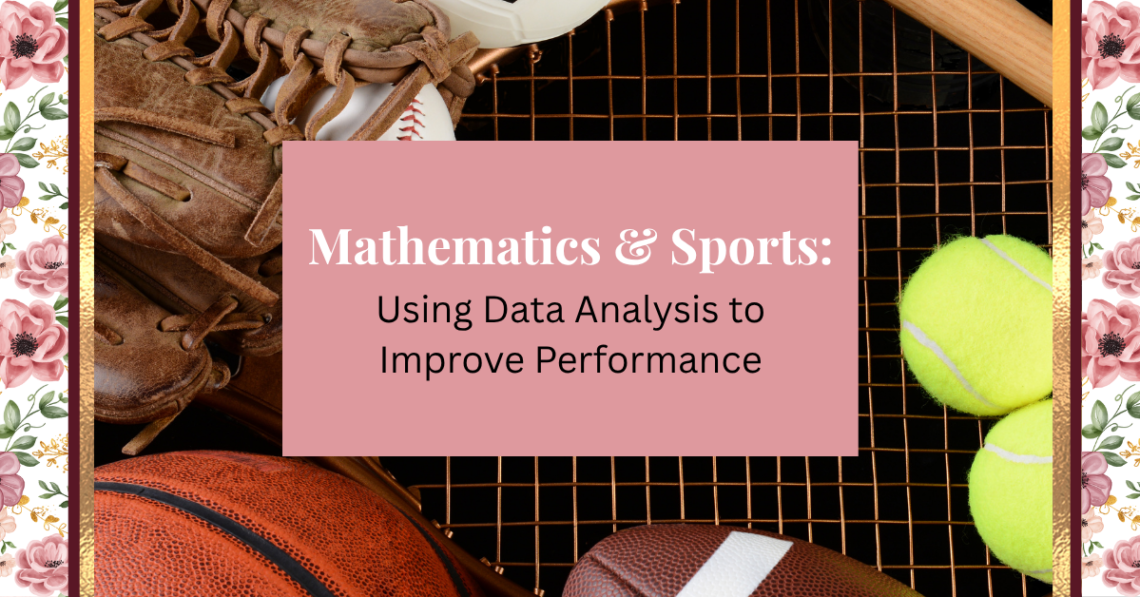Mathematics and sports might not seem to have much in common at first glance, but the truth is, math plays a huge role in shaping the performance of athletes and teams. Whether it’s tracking a player’s performance, analyzing the physics of a sports move, or predicting outcomes of games, data analysis powered by mathematics is transforming how sports are played, coached, and understood. In this post, we’ll explore how data analysis and mathematical principles are used to enhance athletic performance, develop strategies, and revolutionize the world of sports.
1. The Role of Statistics in Sports
At the core of data analysis in sports is statistics. Statistics are used to measure, analyze, and interpret data, helping coaches, analysts, and players make informed decisions. This data can range from simple scores to more complex metrics that track various aspects of a player’s or team’s performance.
- Basic Stats: In almost every sport, basic statistics like points scored, assists, rebounds (basketball), goals (soccer), or hits (baseball) are used to track performance. These numbers give fans and coaches a quick look at how players are doing, but they are just the beginning of what math can do in sports.
- Advanced Metrics: Many sports have developed advanced statistics to get a deeper understanding of performance. For example:
- In basketball, metrics like Player Efficiency Rating (PER) or true shooting percentage (TS%) help assess how effectively a player is contributing to the game.
- In baseball, the on-base percentage (OBP), slugging percentage (SLG), and WAR (Wins Above Replacement) offer more detailed insights into a player’s contribution.
- In soccer, metrics like expected goals (xG) and pass completion percentage give a more nuanced understanding of player and team performance.
These stats help determine not only the individual strengths of players but also how well they fit into team dynamics.
2. Predictive Analytics: Using Data to Forecast Outcomes
One of the most powerful ways that math is used in sports is through predictive analytics, which involves using past performance data to forecast future outcomes. Predictive models use statistical techniques, such as regression analysis and machine learning, to make predictions about future events, like the outcome of a game or the likelihood of a player performing well in a given situation.
- Game Predictions: Sports analysts often use predictive models to forecast game outcomes. By analyzing past game data, team statistics, and individual player performances, mathematical models can provide probabilities for the result of a match. For example, in soccer, models might consider factors like team form, player injuries, and historical matchups to predict the likelihood of a win, loss, or draw.
- Player Performance: Predictive analytics can also be used to forecast individual player performance. For example, baseball teams might use data from previous seasons to predict how a player will perform at bat or in the field, or how a pitcher might fare against a specific lineup. In basketball, predictive models might help coaches determine how well a player will perform based on their shooting accuracy, defensive skills, and other factors.
- Betting Markets: Predictive analytics have also made their way into the sports betting world, where algorithms calculate the odds and predict outcomes of games. By analyzing vast amounts of historical data, these models can improve the accuracy of predictions and offer insight into which bets might be more favorable.
3. Biomechanics and Physics: The Math of Motion
In addition to performance stats and predictions, math is also used to understand the physics behind sports movements. The study of biomechanics looks at how the human body moves and how different techniques can be optimized for better performance.
- Optimizing Techniques: Math helps athletes optimize their techniques for maximum efficiency. For example, in sprinting, the angle at which a runner’s foot hits the ground, the speed of their stride, and the force applied all play a critical role in how fast they can run. By analyzing these factors mathematically, coaches can adjust an athlete’s form to reduce energy waste and increase speed.
- Projecting Motion: Physics is used in sports to understand how objects move through the air, such as a football being thrown or a soccer ball being kicked. The laws of motion, such as Newton’s Laws, can be applied to predict the trajectory of a ball, helping athletes learn how to optimize their throws or kicks. For example, in basketball, understanding the optimal angle and velocity of a shot can improve shooting accuracy.
- Sports Equipment Design: Engineers use math to design equipment that enhances performance. In sports like golf or tennis, the shape of the club or racket, as well as the materials used, are carefully engineered to maximize energy transfer and minimize resistance. These designs are based on mathematical models and calculations that help improve the player’s ability to control the ball.
4. Wearable Technology and Performance Tracking
Wearable technology is another exciting area where math and sports intersect. Devices like fitness trackers, heart rate monitors, and GPS trackers collect large amounts of data that can be used to assess an athlete’s performance and help them train more effectively.
- Heart Rate and Energy Expenditure: Wearable devices track an athlete’s heart rate during training and games. By analyzing the data, coaches can determine how hard a player is working, how much energy they are expending, and whether they are in the optimal range for performance. This data can also help prevent overtraining by monitoring recovery times and preventing fatigue-related injuries.
- Movement Tracking: GPS devices track an athlete’s movement on the field, providing data on distance traveled, speed, and acceleration. In sports like soccer or football, this data can help assess an athlete’s work rate, positioning, and overall efficiency during a game. Coaches can use this information to make strategic adjustments in real-time or in post-game analysis.
- Wearable Sensors: Some wearable sensors even measure things like muscle tension and fatigue. By using mathematical models to analyze this data, sports scientists can help athletes optimize their training routines and improve their recovery times, preventing injuries and maximizing performance.
5. Data-Driven Coaching Decisions: In-Game Strategies
Mathematics also plays a vital role in real-time decision-making during games. Coaches are increasingly relying on data analysis to make critical decisions about player rotations, in-game strategies, and tactical adjustments.
- Shot Selection and Defense Strategies: In sports like basketball, coaches use data analysis to determine the most effective shot selections based on a player’s shooting percentages from various spots on the court. For example, they might advise a player to take more three-pointers from a certain angle if their shooting percentage is high in that area. In soccer, data analysis can inform defensive strategies, such as whether a team should play a more aggressive high press or fall back into a defensive structure based on the opposing team’s tendencies.
- In-Game Adjustments: Data analysis doesn’t just happen before or after the game; it also occurs during the game. Coaches and analysts use real-time data from players to assess performance and make adjustments during halftime or even in-between plays. For example, in football, data might show that a particular offensive strategy isn’t working well against the defense, prompting a change in play calls.
- Fatigue Management: In sports like basketball and football, players are constantly moving at high speeds, and fatigue can negatively impact their performance. Coaches use data analysis to monitor players’ fatigue levels and make decisions about substitutions. This ensures that players remain at their optimal performance levels for as much of the game as possible.
Conclusion
Mathematics is more than just numbers on a page—it’s an integral part of how sports are played, analyzed, and understood. Whether it’s through advanced statistics, predictive models, biomechanical optimization, or wearable technology, math is helping athletes perform at their best and revolutionizing the way we view sports. From improving individual player performance to informing in-game decisions and shaping long-term strategies, math and data analysis are crucial to success in the world of sports.
How do you think math impacts your favorite sport? Share your thoughts in the comments below! Have you noticed any data-driven trends in your team or player performances? Let’s discuss!





